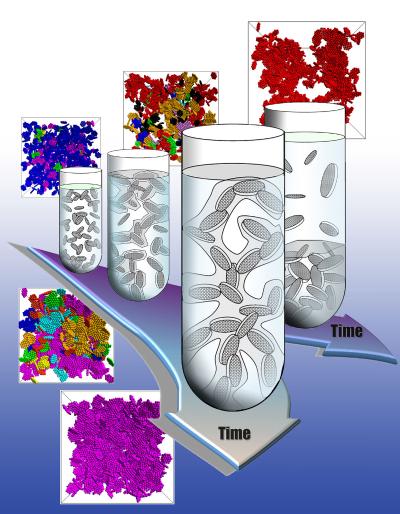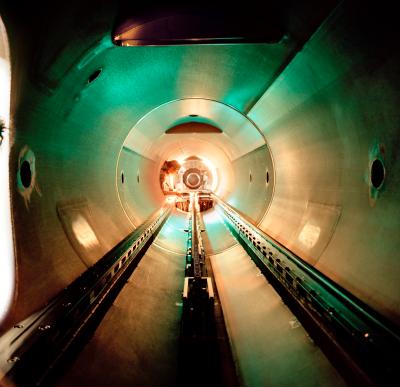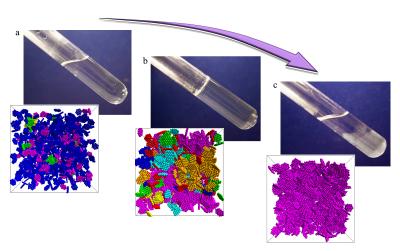- Home
- News
- General News
- A new state of soft...
A new state of soft matter confirmed
15-12-2010
Experiments at the ESRF by an international team of researchers have confirmed the existence of so-called “equilibrium gels”, a predicted new state of soft matter. The seven year-study published in Nature Materials is opening interesting perspectives for developing new materials like creams or gels that are both soft and extremely stable over long time.
Share
Household products are often liquids containing dispersed nanoparticles to give them the desired density, viscosity and texture. However, over long time scales, these colloidal suspensions typically undergo a slow separation into two phases. The discovery of an “equilibrium gel” state, published in Nature Materials by scientists from Italy (Consiglio Nazionale delle Ricerche, CNR, and University of Rome “La Sapienza”) and France (European Synchrotron Radiation Facility, ESRF, and Grenoble University “Joseph Fourier”), suggests the possibility to synthesize new soft materials that are exceptionally stable and do not age, which is particularly important for medical applications.
The scientists observed the new state of soft-matter in laponite clay suspensions commercially available synthetic clay used to thicken many water-based products like surface coatings, household cleaners or personal care products. “Clays dispersed in water”, say the researchers, “form a colloidal solution made of nanometre sized discs with a net negative charge on the faces and positive along the edges. Such a charge distribution gives a highly oriented interaction potential, which results is a liquid phase of very low density which has been called an “empty liquid”. Over time the system exhibits an extremely slow phase separation for very low clay concentrations.
Over a period of seven years, the scientists observed also that it was possible for colloidal clays at slightly higher concentrations to evolve reversibly and continuously from the empty liquid state to an arrested structure which is then called an equilibrium gel. They also confirmed that this gel consists of a sparse network of nanometre-sized discs making T-shaped contacts with each other — that is, the rim of one disc touches the face of another — as predicted from computer simulations of colloidal particles that form a limited number of bonds.
 |
|
Paths to the equilibrium gel formation and phase separation as a function of waiting time. Credit ESRF/CNR/Uni Rome. |
“A significant part of the experiments used synchrotron X-rays, with the main novelty being that a set of samples was monitored continuously over a period of several years”, adds Theyencheri Narayanan of the ESRF.
“By looking into a clay colloidal solution”, explains Barbara Ruzicka of CNR, “we have observed the first experimental proof of the existence of extremely stable gels (the so-called equilibrium gels), never seen before, confirming a theoretical prediction made several years ago.” The colloidal particles in this liquid phase “stop in a low-density gel state, built up with very little matter, hence filling only a small fraction of the available space”, concludes Emanuela Zaccarelli of CNR. “Therefore under certain conditions these 'empty liquids' can guide the production of extremely light materials, which are ultra-stable over a long time for use, for example, as nano-composites in biomedical products”.
Reference: Barbara Ruzicka1 et al., “Observation of empty liquids and equilibrium gels in a colloidal clay", Nature Materials 12 December 2010, DOI 10.1038/NMAT2921
 |
|
Movable detector for small-angle scattering studies on ESRF beamline ID02, where the synchrotron experiment was performed. Credit: P. Ginter/ESRF. |
Top image: Illustration of the bonding interaction between clay platelets. Credit ESRF/CNR/Uni Rome.




